Out and About again!
After over two months of enforced idleness, moving house and family to another country, new school and job, I managed to return to the place where I was first introduced to the Malayan jungle by my mother in the early 1960s.
I give some background to the place since it was the brainchild of, and named after, a remarkable man who deserves to be remembered more than he is.
Part 1
Templer Park was Malayas first wilderness recreation park opened in 1954 when the country was effectively at war, during the Emergency, a term the British use whenever they have a small war but do not wish to say so as it is bad for business, raising insurance premiums on goods, transport and plant, increasing food prices, depressing the value of assets, and so on.
It was an unusual park from the outset. It was opened by Sir Gerald Templer, who arrived in an armoured car with a military escort. Photos of the event show that Templer and the dignitaries made speeches, cut ribbons, and planted trees at the edge of the jungle all in easy range of a communist sniper. A good shot could have done it over iron sights.
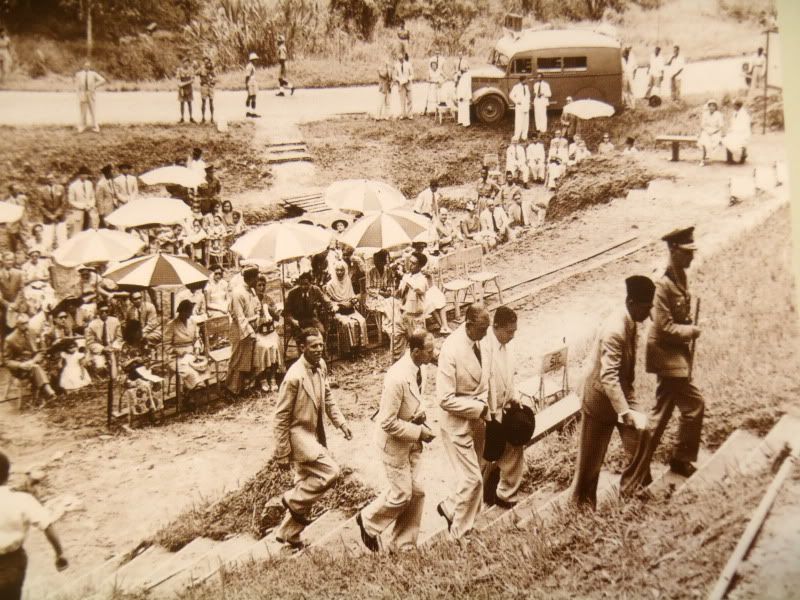
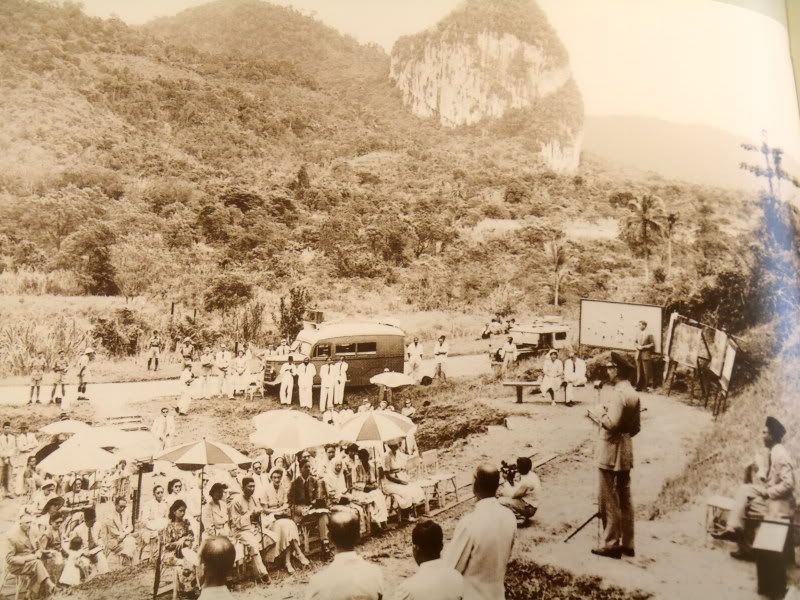
Food, and therefore effectively picnicking, was totally prohibited and having food in the park was an arrestable offence under Emergency Regulations. This was to prevent any supplies getting to the Communists. Remaining anywhere in the park after the 6pm curfew was risky. If you were not caught you might be shot, not by Communists but by the authorities. Occasionally walkers were startled to encounter CTs and most stayed in the open areas.
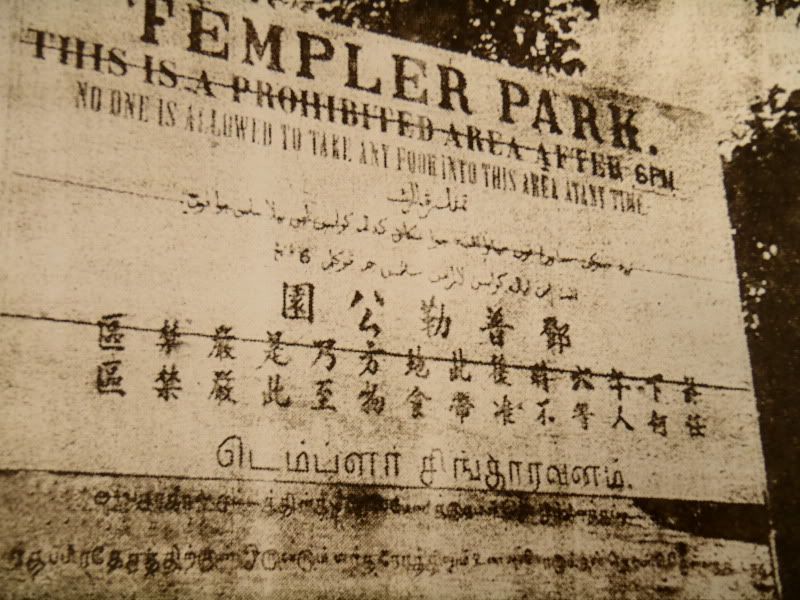
The parks namesake was no less unusual. He fought in WW1. After that war, Templer became the only senior British officer to have actually fought the Russians (in the Caucasus in 1919). He fought guerillas in Palestine in the 20's . Promoted during WW2 to be the youngest Lt. Gen. he secured a demotion so as to get a combat command and served in North Africa, Anzio and Monte Cassino. Severely injured, when a piano blasted off a truck by a roadside bomb landed on his back, he could no longer avoid becoming a Lt. General and on recovery went into Intelligence and Special Operations Executive.
After the war he became Director of Military Government in Germany and had the distinction of sacking Konrad Adenauer, then Mayor of Cologne and future German Chancellor, for laziness and inefficiency.
In 1950, Communist terrorists ambushed and assassinated Sir Henry Gurney, the senior colonial official in Malaya. Alarmed by the progress of the insurgency, Churchill sent Templer out with supreme command - combined civil and military powers the like of which had not been seen since Oliver Cromwell.
Templer moved swiftly. Arriving in his armoured car, he besieged a small town, Tanjong Malim, known to have strong communist sympathies, imposing a 22 hour a day curfew. Letters were sent to every resident beginning with I am sure you are not a communist. If you are throw this away. If not An invitation to provide information followed and everyone placed the counterfoil into a ballot box which was opened by Templar. Many people were arrested and the trust between the communists and the population was severely damaged. He also mounted a psy-ops programme that succeeded in CTs surrendering or killing their own leaders.
It was Templer who said that, "The answer lies not in pouring more troops into the jungle, but in the hearts and minds of the people." He is seen as one of the few commanders who effectively quelled an insurgency and the model was later copied, but unsucessfully implemented, in Vietnam and elsewhere. He built fortified but attractive hamlets where ethnic Chinese and Orang Asli were resettled beyond the reach of the CTs.
It is amazing that amidst all these problems, he found time to think about the need for an urban green lung for the new capital city.
He left Malaya in 1954 having severely reduced the operational ability of the communists. In characteristic style, he warned against complaceny saying Ill shoot the ******* who says that this Emergency is over. On his return he finished at the peak of his profession -Field Marshal and Chief of the Imperial General General Staff.
Part 2
Today the park is a popular place with school children, families and couples playing or relaxing by its many streams, waterfalls and swimming pools as it was when I came here as a child.
But Jan and I were going far away from the crowd to the remoter Eastern side where we have never seen anyone and where there is only one aboriginal trail in which soon peters out. This is clambering over and crawling under terrain as much as walking and a real test of your torsos fitness.

This is a good place to find snakes especially Trimeresus, Waglers Pit viper and the pythons.
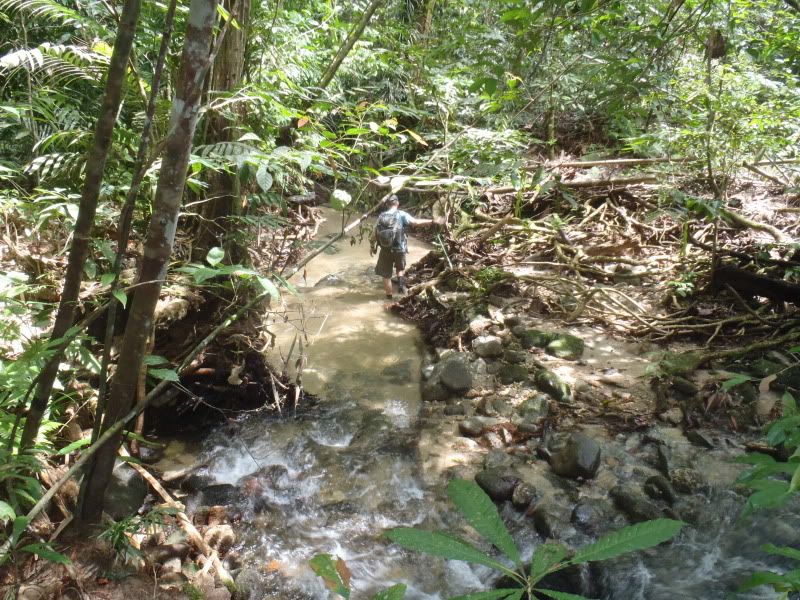
We were looking for a waterfall shown in an Emergency era sketch map. A couple of years ago we located the site of a CT camp used in the 50s and an earlier camp used by F. Spencer Chapman (of The Jungle is Neutral & Jungle Soldier fame) and finding the waterfall would be a nice bonus.
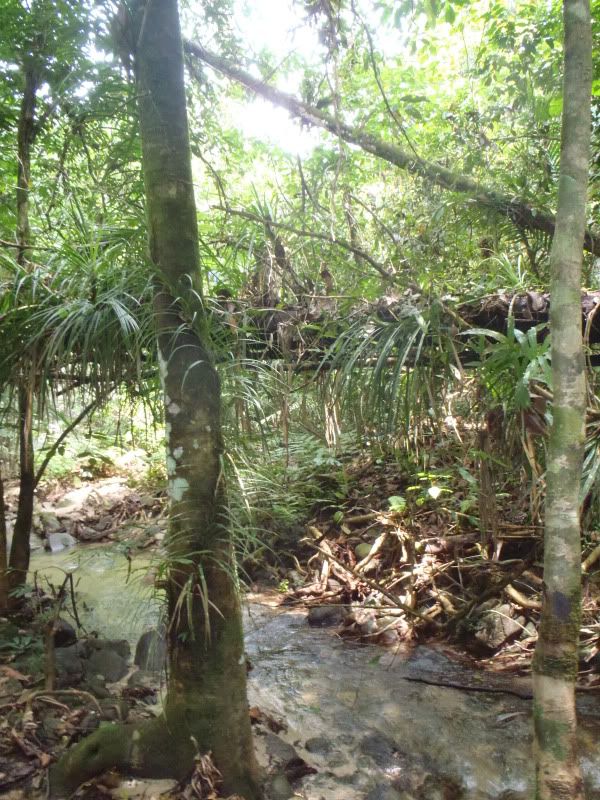
There were lots of fallen trees and vines which made going rather tiring but the stream bed was shallow and sandy in places and was easier except when it changed to loose rock and sand. Tip: jungle boots are great for walking in streams
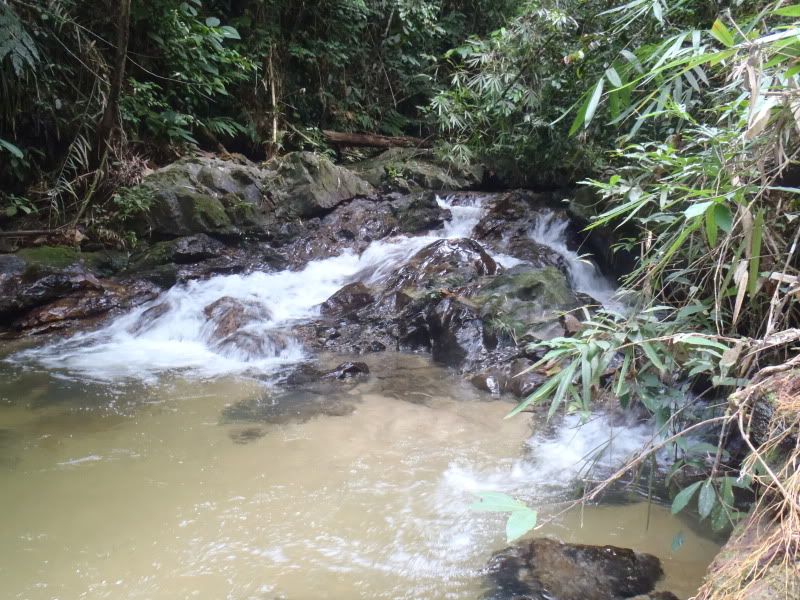
After a while at a confluence, we found an empty camp. Possibly aboriginal or poachers or both. There seemed to be a drying/smoking frame next to the shelter. We heard a dog loudly barking but did not see it. It was the early warning system and probably tied up.
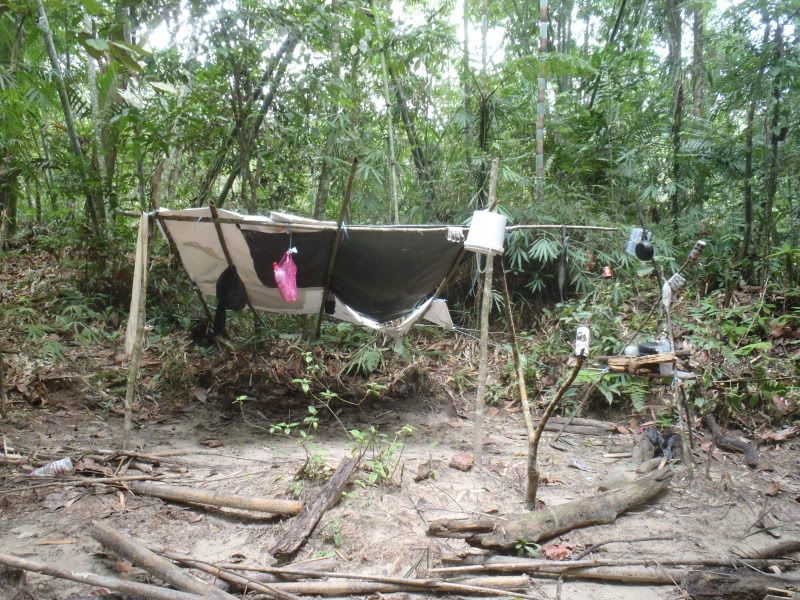
From the sound of the bark we did not want to meet it harsh like one that smoked 3 packs and drunk a bottle of whisky a day. Mean as a junkyard dog.
I have found signs of an old camp here before but never seen anyone. No foot prints so they must have been working the other fork of the stream
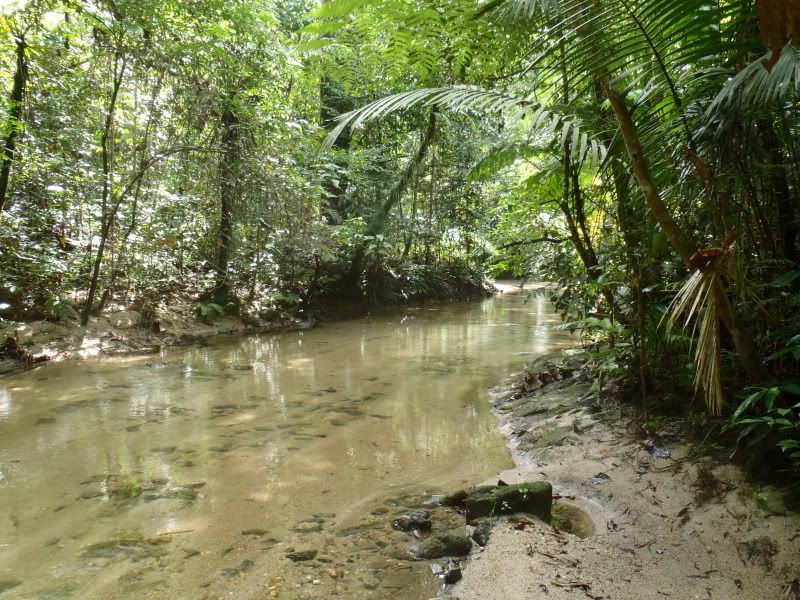
The forest changed from old secondary growth to swampy forest to Near Primary Forest and then stands of Shorea Curtisii.
There was lots of pig sign and the leeches were out in abundance. The jungle boots kept my legs leech free but Jan was not so lucky.
Later on the way back this little fellow developed an attachment to us - a horned spider.
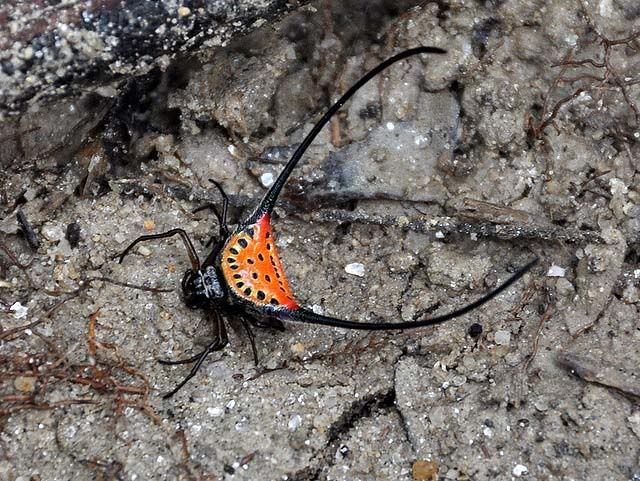
Wet and hard work. But fortunately cool
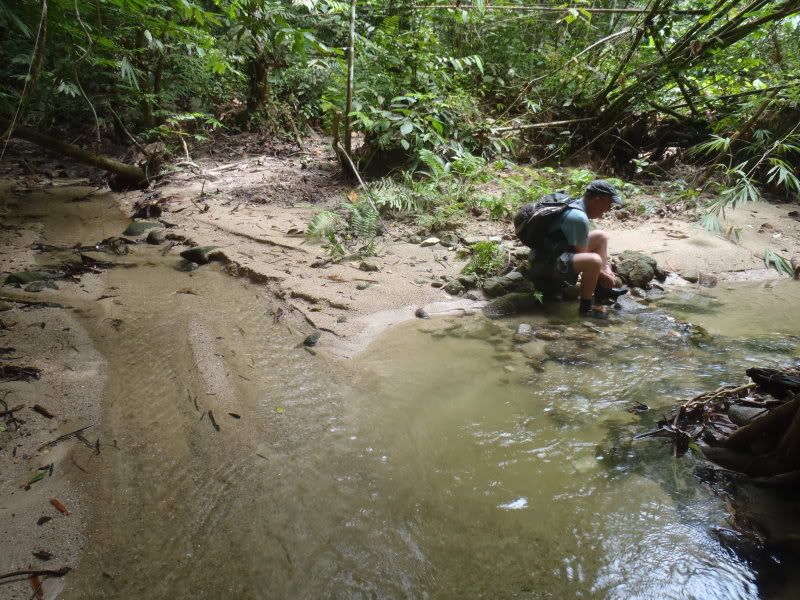
Finally just as I was about to drop and we had started to doubt the old sketch map, we came to the fall.
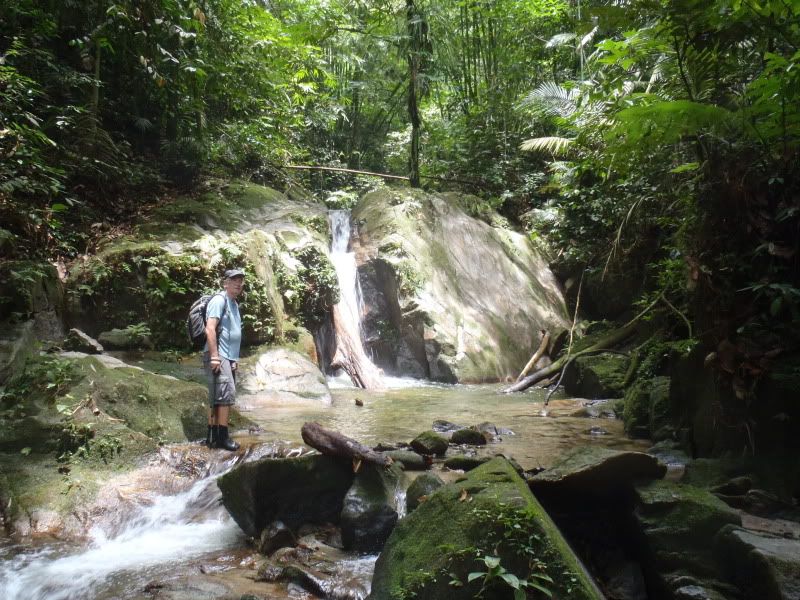
A small fall made of three short drops.
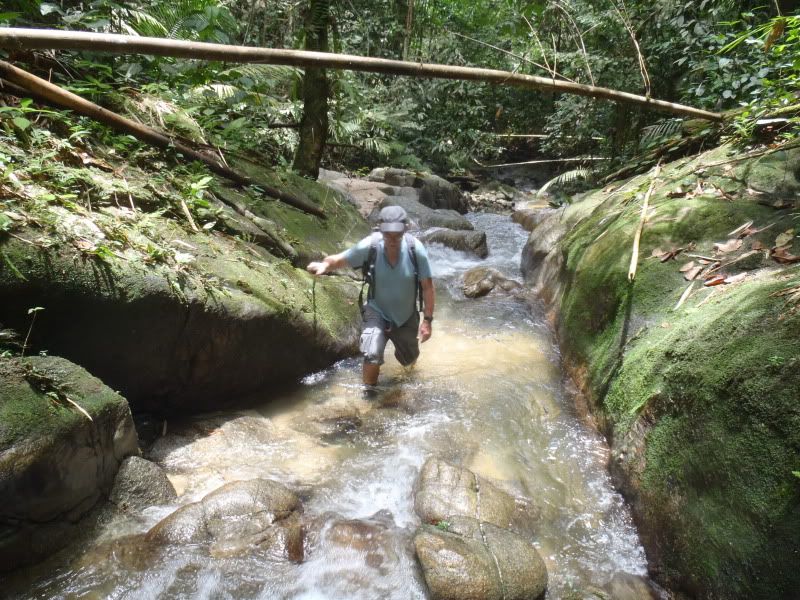
Sweet drinkable water only forest upstream- and three small swimming pools at each level.
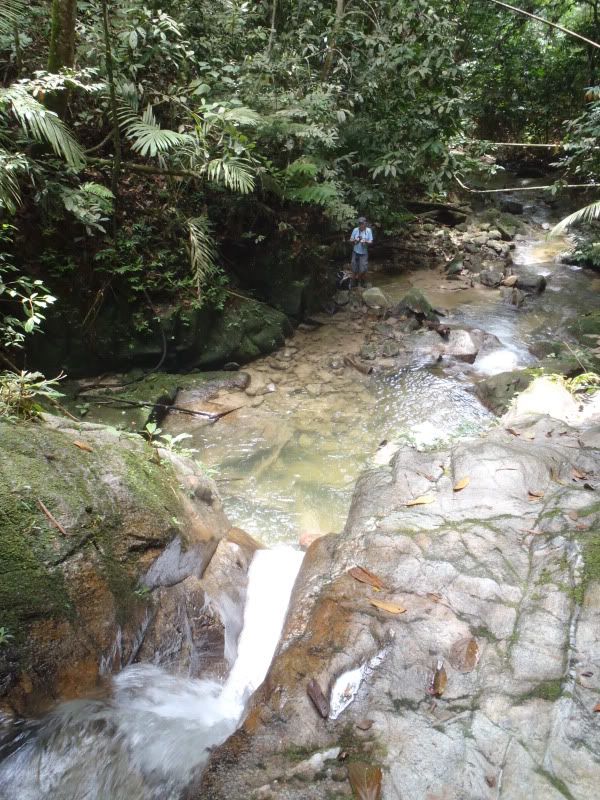
A lovely place.

Jan went to the top to look around. He is the authority on waterfalls in Malaya and probably has been to more than anyone alive today.
I contented myself trying to start a fire with the wood from the stream ignoring the wood on the slopes or hanging kindling. I carry a 6 seasoned walking staff and cut off the top 8-10 or so, split, shave and feather it to start the fire. Bamboo as usual, even if damp, will catch if split and shaved fine enough.
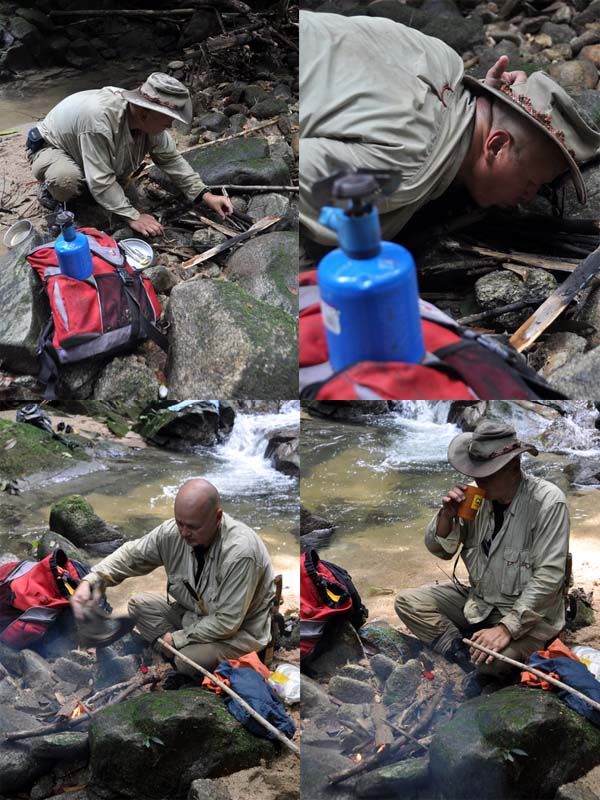
Though I got it going, I was complacent and it went out while I was fussing about elsewhere so I started again to Jans amusement. I used a lighter and 2 of duct tape to begin it the second time.
Over a coffee we talked about the place. It would be a nice spot to camp for 1-3 persons. It was not marked on the OS map. It was shown, but not named, in the 1950s sketch.
In 1942 Spencer Chapman came near here with anti-Japanese guerillas and some British soldiers who had been cut off from their units by the swift Japanese advance. One of them was a gunner who was very ill and had to be carried. Chapman often went hunting in the area for wild pig to feed the group and must have known these falls. So we decided to name the place Gunner Falls to remember this unnamed soldier who later died and was buried in an unmarked grave by the edge of the jungle near here.

Jan made a steinman (cairn). We had nothing from the artillery so I used the formation badge of the South Wales Bushcrafters. I hope they do not mind.
After over two months of enforced idleness, moving house and family to another country, new school and job, I managed to return to the place where I was first introduced to the Malayan jungle by my mother in the early 1960s.
I give some background to the place since it was the brainchild of, and named after, a remarkable man who deserves to be remembered more than he is.
Part 1
Templer Park was Malayas first wilderness recreation park opened in 1954 when the country was effectively at war, during the Emergency, a term the British use whenever they have a small war but do not wish to say so as it is bad for business, raising insurance premiums on goods, transport and plant, increasing food prices, depressing the value of assets, and so on.
It was an unusual park from the outset. It was opened by Sir Gerald Templer, who arrived in an armoured car with a military escort. Photos of the event show that Templer and the dignitaries made speeches, cut ribbons, and planted trees at the edge of the jungle all in easy range of a communist sniper. A good shot could have done it over iron sights.


Food, and therefore effectively picnicking, was totally prohibited and having food in the park was an arrestable offence under Emergency Regulations. This was to prevent any supplies getting to the Communists. Remaining anywhere in the park after the 6pm curfew was risky. If you were not caught you might be shot, not by Communists but by the authorities. Occasionally walkers were startled to encounter CTs and most stayed in the open areas.

The parks namesake was no less unusual. He fought in WW1. After that war, Templer became the only senior British officer to have actually fought the Russians (in the Caucasus in 1919). He fought guerillas in Palestine in the 20's . Promoted during WW2 to be the youngest Lt. Gen. he secured a demotion so as to get a combat command and served in North Africa, Anzio and Monte Cassino. Severely injured, when a piano blasted off a truck by a roadside bomb landed on his back, he could no longer avoid becoming a Lt. General and on recovery went into Intelligence and Special Operations Executive.
After the war he became Director of Military Government in Germany and had the distinction of sacking Konrad Adenauer, then Mayor of Cologne and future German Chancellor, for laziness and inefficiency.
In 1950, Communist terrorists ambushed and assassinated Sir Henry Gurney, the senior colonial official in Malaya. Alarmed by the progress of the insurgency, Churchill sent Templer out with supreme command - combined civil and military powers the like of which had not been seen since Oliver Cromwell.
Templer moved swiftly. Arriving in his armoured car, he besieged a small town, Tanjong Malim, known to have strong communist sympathies, imposing a 22 hour a day curfew. Letters were sent to every resident beginning with I am sure you are not a communist. If you are throw this away. If not An invitation to provide information followed and everyone placed the counterfoil into a ballot box which was opened by Templar. Many people were arrested and the trust between the communists and the population was severely damaged. He also mounted a psy-ops programme that succeeded in CTs surrendering or killing their own leaders.
It was Templer who said that, "The answer lies not in pouring more troops into the jungle, but in the hearts and minds of the people." He is seen as one of the few commanders who effectively quelled an insurgency and the model was later copied, but unsucessfully implemented, in Vietnam and elsewhere. He built fortified but attractive hamlets where ethnic Chinese and Orang Asli were resettled beyond the reach of the CTs.
It is amazing that amidst all these problems, he found time to think about the need for an urban green lung for the new capital city.
He left Malaya in 1954 having severely reduced the operational ability of the communists. In characteristic style, he warned against complaceny saying Ill shoot the ******* who says that this Emergency is over. On his return he finished at the peak of his profession -Field Marshal and Chief of the Imperial General General Staff.
Part 2
Today the park is a popular place with school children, families and couples playing or relaxing by its many streams, waterfalls and swimming pools as it was when I came here as a child.
But Jan and I were going far away from the crowd to the remoter Eastern side where we have never seen anyone and where there is only one aboriginal trail in which soon peters out. This is clambering over and crawling under terrain as much as walking and a real test of your torsos fitness.

This is a good place to find snakes especially Trimeresus, Waglers Pit viper and the pythons.

We were looking for a waterfall shown in an Emergency era sketch map. A couple of years ago we located the site of a CT camp used in the 50s and an earlier camp used by F. Spencer Chapman (of The Jungle is Neutral & Jungle Soldier fame) and finding the waterfall would be a nice bonus.

There were lots of fallen trees and vines which made going rather tiring but the stream bed was shallow and sandy in places and was easier except when it changed to loose rock and sand. Tip: jungle boots are great for walking in streams

After a while at a confluence, we found an empty camp. Possibly aboriginal or poachers or both. There seemed to be a drying/smoking frame next to the shelter. We heard a dog loudly barking but did not see it. It was the early warning system and probably tied up.

From the sound of the bark we did not want to meet it harsh like one that smoked 3 packs and drunk a bottle of whisky a day. Mean as a junkyard dog.
I have found signs of an old camp here before but never seen anyone. No foot prints so they must have been working the other fork of the stream

The forest changed from old secondary growth to swampy forest to Near Primary Forest and then stands of Shorea Curtisii.
There was lots of pig sign and the leeches were out in abundance. The jungle boots kept my legs leech free but Jan was not so lucky.
Later on the way back this little fellow developed an attachment to us - a horned spider.

Wet and hard work. But fortunately cool

Finally just as I was about to drop and we had started to doubt the old sketch map, we came to the fall.

A small fall made of three short drops.

Sweet drinkable water only forest upstream- and three small swimming pools at each level.

A lovely place.

Jan went to the top to look around. He is the authority on waterfalls in Malaya and probably has been to more than anyone alive today.
I contented myself trying to start a fire with the wood from the stream ignoring the wood on the slopes or hanging kindling. I carry a 6 seasoned walking staff and cut off the top 8-10 or so, split, shave and feather it to start the fire. Bamboo as usual, even if damp, will catch if split and shaved fine enough.

Though I got it going, I was complacent and it went out while I was fussing about elsewhere so I started again to Jans amusement. I used a lighter and 2 of duct tape to begin it the second time.
Over a coffee we talked about the place. It would be a nice spot to camp for 1-3 persons. It was not marked on the OS map. It was shown, but not named, in the 1950s sketch.
In 1942 Spencer Chapman came near here with anti-Japanese guerillas and some British soldiers who had been cut off from their units by the swift Japanese advance. One of them was a gunner who was very ill and had to be carried. Chapman often went hunting in the area for wild pig to feed the group and must have known these falls. So we decided to name the place Gunner Falls to remember this unnamed soldier who later died and was buried in an unmarked grave by the edge of the jungle near here.

Jan made a steinman (cairn). We had nothing from the artillery so I used the formation badge of the South Wales Bushcrafters. I hope they do not mind.
